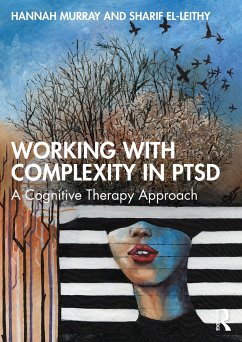
Overcoming Barriers to Progress in Psychotherapy
A Clinician's Guide
Versandkostenfrei!
Versandfertig in 6-10 Tagen
33,99 €
inkl. MwSt.
Weitere Ausgaben:

PAYBACK Punkte
17 °P sammeln!
This accessible guide comprehensively addresses why psychotherapy of diverse forms often falters and provides effective strategies to succeed.Psychotherapy on occasion does not progress as both the client and therapist would like it to, and affecting deep-lasting change can be difficult and elusive. By addressing the spectrum of reasons for this occurrence inclusive of client, therapist, and interactive influences, barriers to psychotherapy progress can be managed, optimizing outcomes for the wellbeing of clients and success of psychotherapists. Given that the client, therapist, and interactio...
This accessible guide comprehensively addresses why psychotherapy of diverse forms often falters and provides effective strategies to succeed.
Psychotherapy on occasion does not progress as both the client and therapist would like it to, and affecting deep-lasting change can be difficult and elusive. By addressing the spectrum of reasons for this occurrence inclusive of client, therapist, and interactive influences, barriers to psychotherapy progress can be managed, optimizing outcomes for the wellbeing of clients and success of psychotherapists. Given that the client, therapist, and interaction between both parties is integral to psychotherapy, coverage is provided in three sections: client influences, therapist influences, and interactive influences. Within each chapter, relevant literature is reviewed, key sources of the barrier to psychotherapy presented, and strategies for addressing the problem provided, with several case examples and vignettes.
This book is essential for psychotherapists of all backgrounds, including students of psychotherapy.
Psychotherapy on occasion does not progress as both the client and therapist would like it to, and affecting deep-lasting change can be difficult and elusive. By addressing the spectrum of reasons for this occurrence inclusive of client, therapist, and interactive influences, barriers to psychotherapy progress can be managed, optimizing outcomes for the wellbeing of clients and success of psychotherapists. Given that the client, therapist, and interaction between both parties is integral to psychotherapy, coverage is provided in three sections: client influences, therapist influences, and interactive influences. Within each chapter, relevant literature is reviewed, key sources of the barrier to psychotherapy presented, and strategies for addressing the problem provided, with several case examples and vignettes.
This book is essential for psychotherapists of all backgrounds, including students of psychotherapy.














